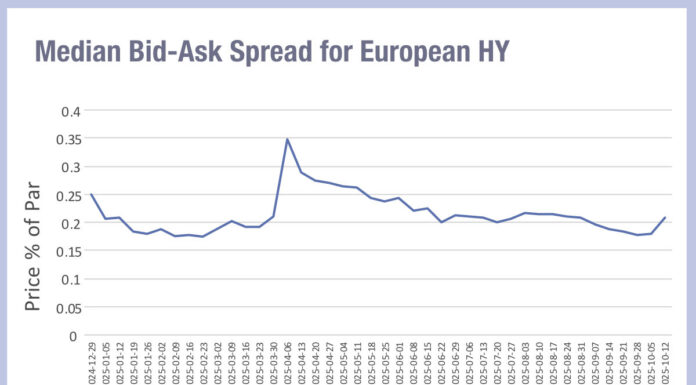By Sobia Hamid.
The growth of electronic trading in fixed income is driving connectivity between trading platforms. In 2016, Greenwich Associates estimated electronic trading of investment grade bonds in Europe was around 46% of notional value and in the US 20%. Under the revised Markets in Financial Instruments Directive (MiFID II) due to come into effect on 3 January 2018, the quantification of trading and execution will be increased making electronic trading more appealing.
“Electronic trading continues to grow in terms of corporate bonds, and works well up to a certain size, however with larger tickets the bilateral relationship between investor and the bank remains incredibly important,” says Byron Cooper-Fogarty, head of sales, Neptune Networks.
Two key drivers of the increased push to electronify the fixed income market are greater efficiency savings, which save time and avoid processing risk, and regulation. As more asset classes become electronic, it is paramount to provide secure connectivity to all counterparties, and there is increased interest on exchange connectivity into those venues ahead of MiFID II, set to take effect from 3 January 2018.
Neptune Networks, the fixed income market network which delivers large-size axe data for pre-trade indications in corporate bonds, announced on 6 April 2017 that it has completed connectivity to FlexTrade’s buy-side execution management systems (EMS), FlexTRADER.
“FlexTrade is now one of four EMS/order management systems (OMSs) connected to Neptune Networks, with a further four vendors in the pipeline,” says Cooper-Fogarty. “Electronic trading should never be at the expense of relationship between [buy side and sell side], Neptune was founded to foster and facilitate this important relationship.”
TransFICC, the provider of an application programming interface (API) designed to support electronic trading in fixed income and derivatives, is collaborating with IPC Systems on connectivity.
IPC operates the Financial Markets Network, which connects with both buy-side and sell-side users for electronic and voice-trading.
“In collaborating with TransFICC’s one API for eTrading, IPC is able to consolidate multiple electronic trading venues and provide access to a wide array of exchanges,” says Tim Carmody, vice president of Global Product Management and Engineering for Financial Markets Network at IPC.
MiFID II is expected to push traders towards electronic trading, due to its requirements for reporting and tracking of the order lifecycle. Nevertheless a large part of the fixed income market is conducted by phone.
Cooper-Fogarty concludes “There is a sensitivity to asking too many people with large size trades, with electronic trading the size of the ticket is more aligned to asking multiple counterparties for a price.”
©Markets Media Europe 2025












